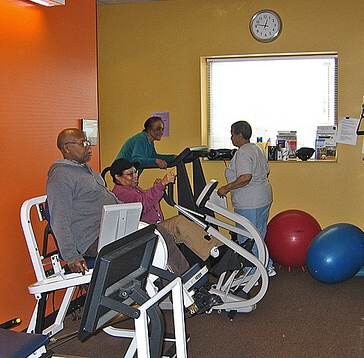Everybody wants to know, what's the best exercise for me? If you're a Baby Boomer, you're at that age where your body doesn't work quite the same way it did 15 or 20 years ago. So what's the best exercise to keep Baby Boomers fit and healthy?
The easy answer is that the best exercise is the one you'll do regularly. It really is that simple. Any exercise is better than no exercise, but exercise you don't like and won't do won't help you.
Easy answers aside, I have some specific suggestions for people as they age. By the time you hit your fifties, your fitness goals probably have more to do with staying out of the nursing home than with fitting into your skinny jeans. So I emphasize exercises that build muscle, strengthen bones, improve balance, and increase flexibility. Do these things to maintain your functional fitness and independence as you age.

You need resistance exercises to build muscle, because if you're not actively building muscle, you can expect to lose 1/2 pound of muscle every year. Think about how much fat you're putting on if you maintain your weight, but lose 1/2 pound of muscle each year. Strong muscles help support your skeleton and make it possible to manage your daily activities.
Weight-bearing exercises (walking, jogging, dancing, weight lifting) help you maintain or increase your bone density. Over 40 million Americans either have osteoporosis or are at high risk for low bone density.You can prevent dangerous falls and broken bones later in life if you work now to build strong bones.
If you already have porous bones or have other risk factors for osteoporosis, balance training should be a regular part of your exercise routine. Good core stability and balance throughout a range of motion can help prevent falls and broken bones as you age.
Flexibility training should also be part of a Baby Boomer's regular exercise routine. As you age, your muscles and connective tissues become less elastic, and your range of motion decreases. But regular flexibility exercise can slow or reverse your joint limitations.
This may sound like a lot of work, but it's easy to add elements of resistance, balance and flexibility to any exercise that you enjoy doing.
Did your exercise habits change after you passed 40 or 50? What do you do differently now?
(photo credit: EPA Smart Growth)

